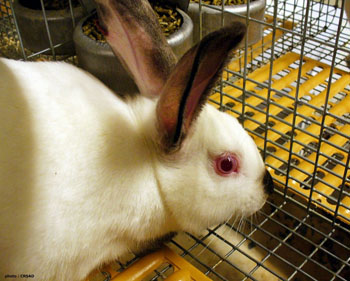Browse "Things"
-
Article
"Alouette!"
"Alouette!" The most popular Canadian folksong. It also has become a symbol of French Canada for the world, an unofficial national song identifiable from the first few measures of its lively chorus in 2/4 time. Marius Barbeau is of the opinion that "Alouette" originated in France, but James J. Fuld, in The Book of World-Famous Music (New York 1966), points out that the first written version, "Alouetté," appeared in A Pocket Song Book for the Use of Students and Graduates of McGill College (Montreal 1879). The song was published later as "Alouette" in the McGill College Song Book (Montreal 1885). The first known printed version in France dates from 1893: it appeared in Julien Tiersot's Revue des traditions populaires, vol 8 (Paris). The words and music are found in many anthologies and collections in Canada, the USA, and even Europe, notably in William Parker Greenough's Canadian Folk-life and Folk-lore (New York 1897). Several versions exist in Canada. Marius Barbeau summarizes the different texts in a work appropriately named Alouette (Montreal 1946). However, in all versions of the song, with its enumerations and frequent recapitulations, the idea remains the same: the lark's feathers are plucked from its head, wings, back, tail, and so on.
"https://development.thecanadianencyclopedia.ca/images/tce_placeholder.jpg?v=e9dca980c9bdb3aa11e832e7ea94f5d9" // resources/views/front/categories/view.blade.php
https://development.thecanadianencyclopedia.ca/images/tce_placeholder.jpg?v=e9dca980c9bdb3aa11e832e7ea94f5d9
-
Article
"Bluebird on Your Windowsill"
"Bluebird on Your Windowsill." Pop song by the Vancouver nurse (Carmen) Elizabeth Clarke (b Winnipeg 1911, d Vancouver 1960). The words (1947) were inspired by a small bird which perched on a windowsill of Vancouver's Hospital for Sick and Crippled Children. The melody was added later.
"https://development.thecanadianencyclopedia.ca/images/tce_placeholder.jpg?v=e9dca980c9bdb3aa11e832e7ea94f5d9" // resources/views/front/categories/view.blade.php
https://development.thecanadianencyclopedia.ca/images/tce_placeholder.jpg?v=e9dca980c9bdb3aa11e832e7ea94f5d9
-
Article
"Canadian Idol"
"Canadian Idol." Reality television show, based on the British singing competition television show "Pop Idol" (2001- ), created by the UK's FremantleMedia and 19 TV, and produced by Canada's Insight Productions.
"https://development.thecanadianencyclopedia.ca/images/tce_placeholder.jpg?v=e9dca980c9bdb3aa11e832e7ea94f5d9" // resources/views/front/categories/view.blade.php
https://development.thecanadianencyclopedia.ca/images/tce_placeholder.jpg?v=e9dca980c9bdb3aa11e832e7ea94f5d9
-
Article
"Early Morning Rain"
"Early Morning Rain." Song by Gordon Lightfoot. Written in the summer of 1964, it recounts a lonely man's attempts to make his way back to a faraway home.
"https://development.thecanadianencyclopedia.ca/images/tce_placeholder.jpg?v=e9dca980c9bdb3aa11e832e7ea94f5d9" // resources/views/front/categories/view.blade.php
https://development.thecanadianencyclopedia.ca/images/tce_placeholder.jpg?v=e9dca980c9bdb3aa11e832e7ea94f5d9
-
Article
"If You Could Read My Mind"
"If You Could Read My Mind." Song by Gordon Lightfoot. Written in 1969, "catches the cadences of a hurt lover unused to words that cut too close" (Maclean's, 1 May 1978). The song has been recorded more than 100 times, first in 1969 by the composer for his LP Sit Down Young Stranger.
"https://development.thecanadianencyclopedia.ca/images/tce_placeholder.jpg?v=e9dca980c9bdb3aa11e832e7ea94f5d9" // resources/views/front/categories/view.blade.php
https://development.thecanadianencyclopedia.ca/images/tce_placeholder.jpg?v=e9dca980c9bdb3aa11e832e7ea94f5d9
-
Article
"Jack Was Every Inch a Sailor"
"Jack Was Every Inch a Sailor." A loose retelling of the biblical Jonah story with a Newfoundland fisherman as the hero, this folksong seems to have been adapted from the New York music-hall song "Every Inch a Sailor."
"https://d2ttikhf7xbzbs.cloudfront.net/media/media/18604b5a-1f8f-4620-a727-9fe10fc19100.jpg" // resources/views/front/categories/view.blade.php
https://d2ttikhf7xbzbs.cloudfront.net/media/media/18604b5a-1f8f-4620-a727-9fe10fc19100.jpg
-
Article
"She's Like the Swallow"
"She's Like the Swallow." Distinctive Newfoundland variant of a large family of songs about unhappy love. Both Maud Karpeles (1930) and Kenneth Peacock (1960) collected it, and its beautiful tune has made it popular with many singers and choirs.
"https://development.thecanadianencyclopedia.ca/images/tce_placeholder.jpg?v=e9dca980c9bdb3aa11e832e7ea94f5d9" // resources/views/front/categories/view.blade.php
https://development.thecanadianencyclopedia.ca/images/tce_placeholder.jpg?v=e9dca980c9bdb3aa11e832e7ea94f5d9
-
Article
"Squid Jiggin' Ground"
This account of hijinks on the squid-fishing grounds is one of Newfoundland's best-known songs.
"https://development.thecanadianencyclopedia.ca/images/tce_placeholder.jpg?v=e9dca980c9bdb3aa11e832e7ea94f5d9" // resources/views/front/categories/view.blade.php
https://development.thecanadianencyclopedia.ca/images/tce_placeholder.jpg?v=e9dca980c9bdb3aa11e832e7ea94f5d9
-
Article
"The Anti-Confederation Song"
"The Anti-Confederation Song." This folksong originated around the time of the heated 1869 election in which Newfoundland was to decide whether or not to join the newly formed Dominion of Canada.
"https://development.thecanadianencyclopedia.ca/images/tce_placeholder.jpg?v=e9dca980c9bdb3aa11e832e7ea94f5d9" // resources/views/front/categories/view.blade.php
https://development.thecanadianencyclopedia.ca/images/tce_placeholder.jpg?v=e9dca980c9bdb3aa11e832e7ea94f5d9
-
Article
R v Coffin
R v Coffin In the summer of 1953 the bodies of 3 American hunters were found in a Gaspé forest. Wilbert Coffin, a local prospector, was charged with and convicted of the murder of one of them, Richard Lindsay.
"https://development.thecanadianencyclopedia.ca/images/tce_placeholder.jpg?v=e9dca980c9bdb3aa11e832e7ea94f5d9" // resources/views/front/categories/view.blade.php
https://development.thecanadianencyclopedia.ca/images/tce_placeholder.jpg?v=e9dca980c9bdb3aa11e832e7ea94f5d9
-
Article
Gladue Case
The Gladue case (also known as R. v. Gladue) is a landmark Supreme Court of Canada decision, handed down on 23 April 1999, which advises that lower courts should consider an Indigenous offender’s background and make sentencing decisions accordingly, based on section 718.2 (e) of the Criminal Code.
"https://development.thecanadianencyclopedia.ca/images/tce_placeholder.jpg?v=e9dca980c9bdb3aa11e832e7ea94f5d9" // resources/views/front/categories/view.blade.php
https://development.thecanadianencyclopedia.ca/images/tce_placeholder.jpg?v=e9dca980c9bdb3aa11e832e7ea94f5d9
-
Article
R v Olson
R v Olson In the summer of 1982, Clifford Robert Olson was arrested for the murder of 11 children.
"https://development.thecanadianencyclopedia.ca/images/tce_placeholder.jpg?v=e9dca980c9bdb3aa11e832e7ea94f5d9" // resources/views/front/categories/view.blade.php
https://development.thecanadianencyclopedia.ca/images/tce_placeholder.jpg?v=e9dca980c9bdb3aa11e832e7ea94f5d9
-
Article
R v Truscott
R v Truscott In 1959, 14-year-old Steven Truscott was convicted in adult court of the murder of 12-year-old Lynn Harper. Few cases in Canadian legal history have created so much controversy.
"https://development.thecanadianencyclopedia.ca/images/tce_placeholder.jpg?v=e9dca980c9bdb3aa11e832e7ea94f5d9" // resources/views/front/categories/view.blade.php
https://development.thecanadianencyclopedia.ca/images/tce_placeholder.jpg?v=e9dca980c9bdb3aa11e832e7ea94f5d9
-
"https://d2ttikhf7xbzbs.cloudfront.net/media/media/586d568c-cc8d-4d40-b4f4-58504bd7fadf.jpg" // resources/views/front/categories/view.blade.php
https://d2ttikhf7xbzbs.cloudfront.net/media/media/586d568c-cc8d-4d40-b4f4-58504bd7fadf.jpg
-
Article
Rabbit Farming
Rabbit farming, officially called cuniculture (from the species name for wild rabbits, Oryctolagus cuniculus), is a small part of Canadian agriculture, with most production in Ontario and Québec.
"https://d2ttikhf7xbzbs.cloudfront.net/media/media/cb6c0bcf-d5f4-46aa-be4f-5de63ae493dd.jpg" // resources/views/front/categories/view.blade.php
https://d2ttikhf7xbzbs.cloudfront.net/media/media/cb6c0bcf-d5f4-46aa-be4f-5de63ae493dd.jpg
